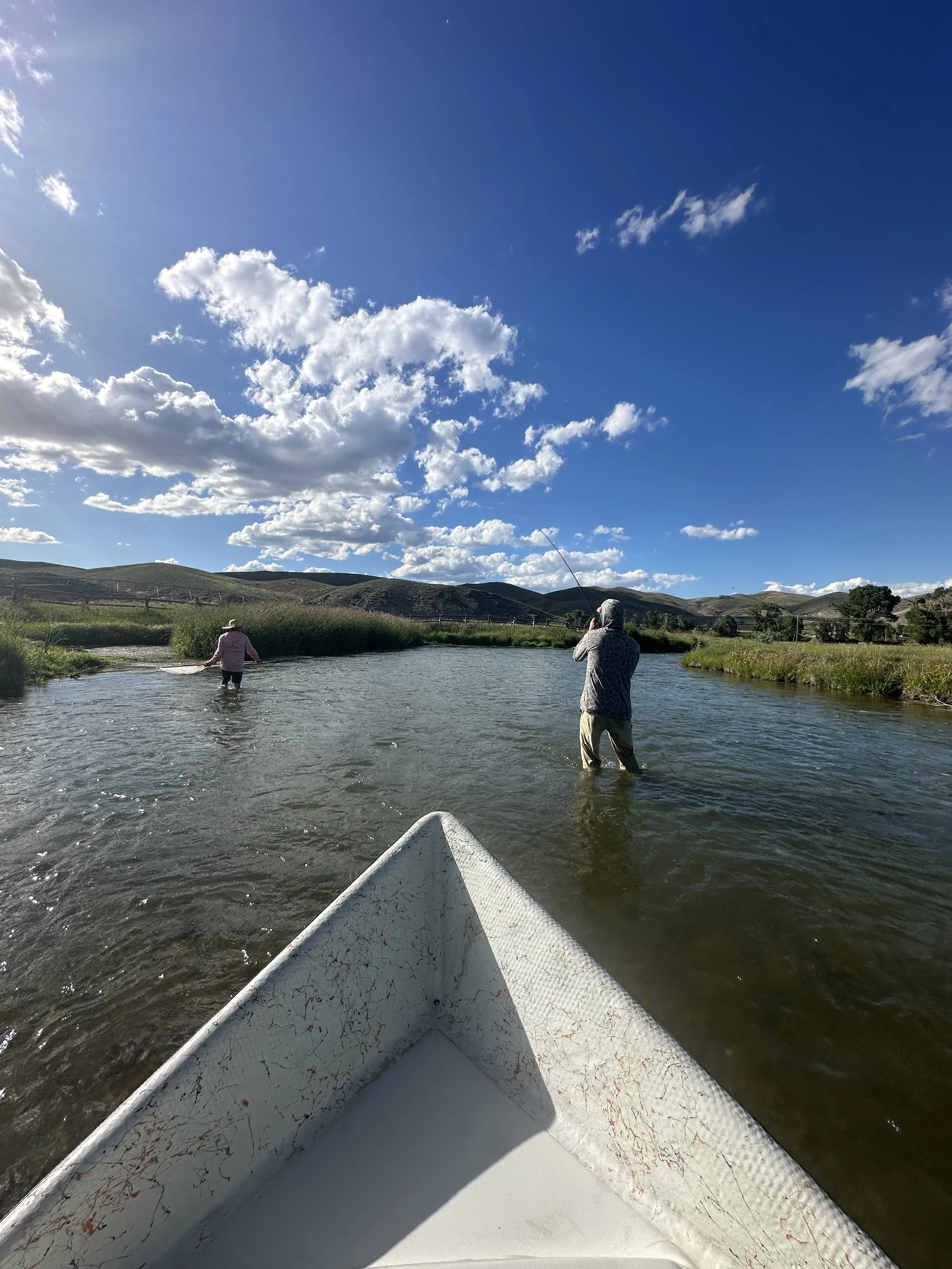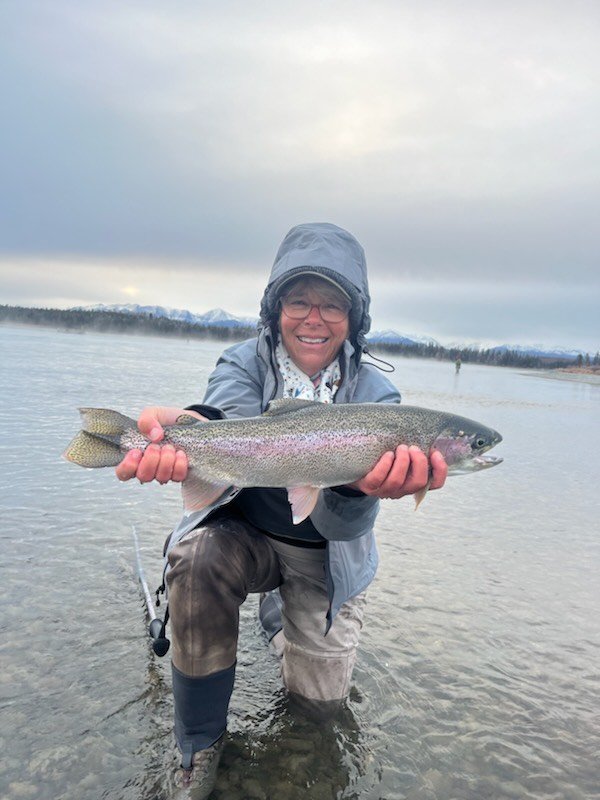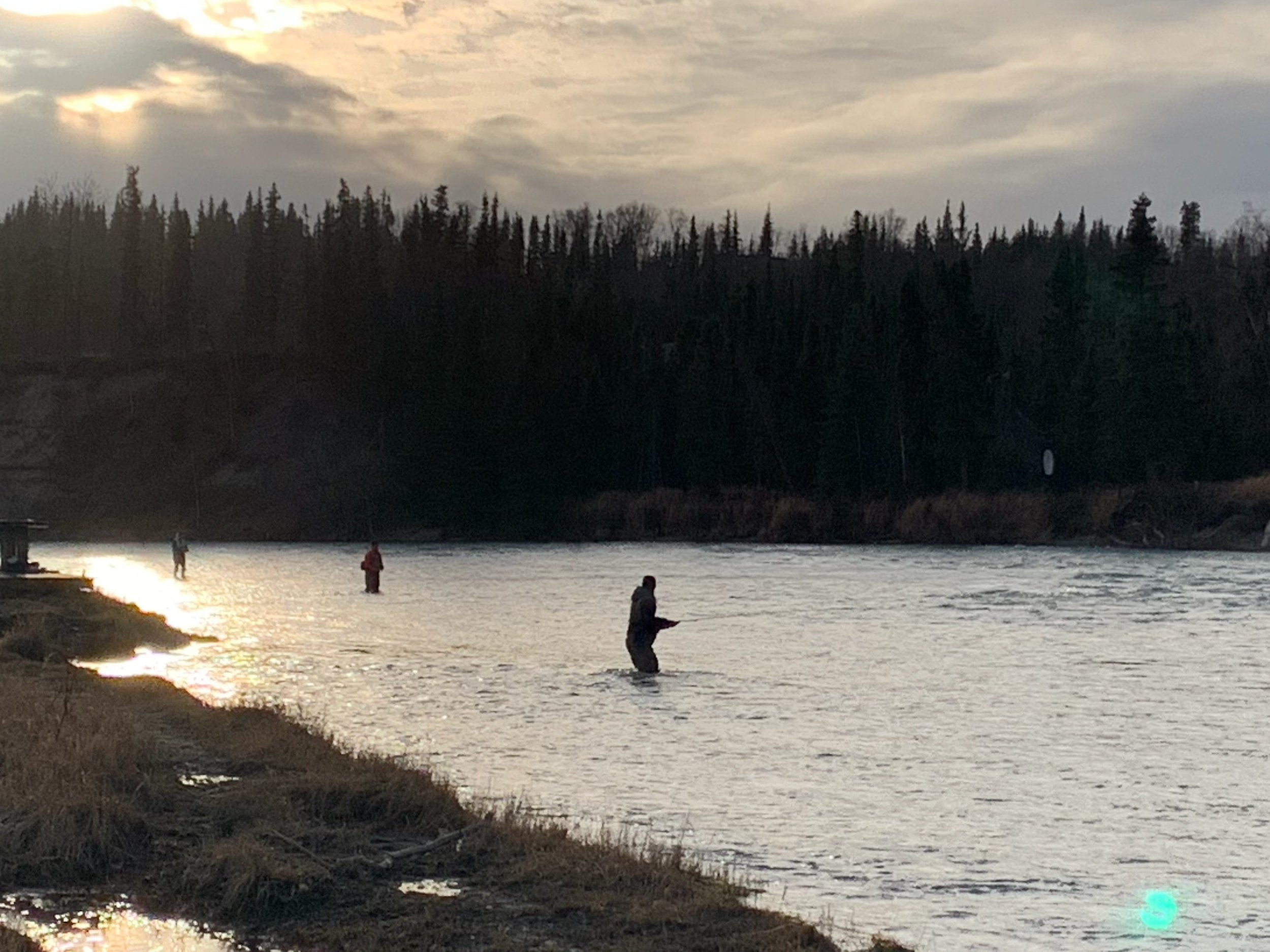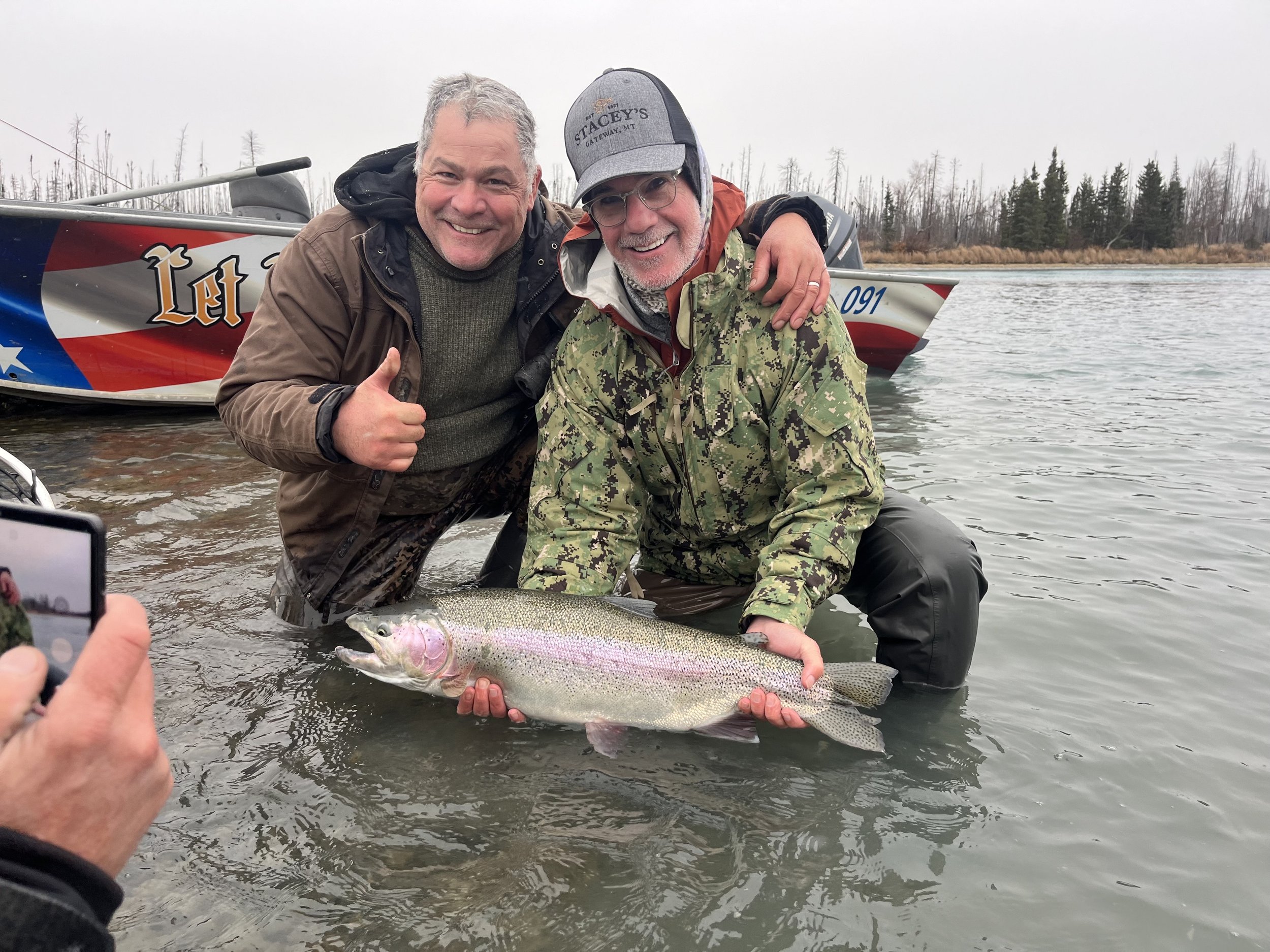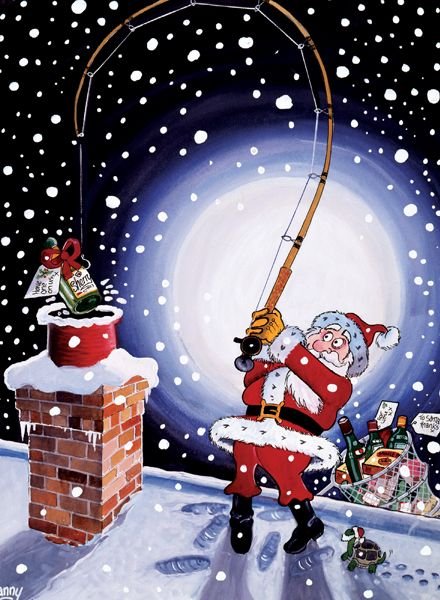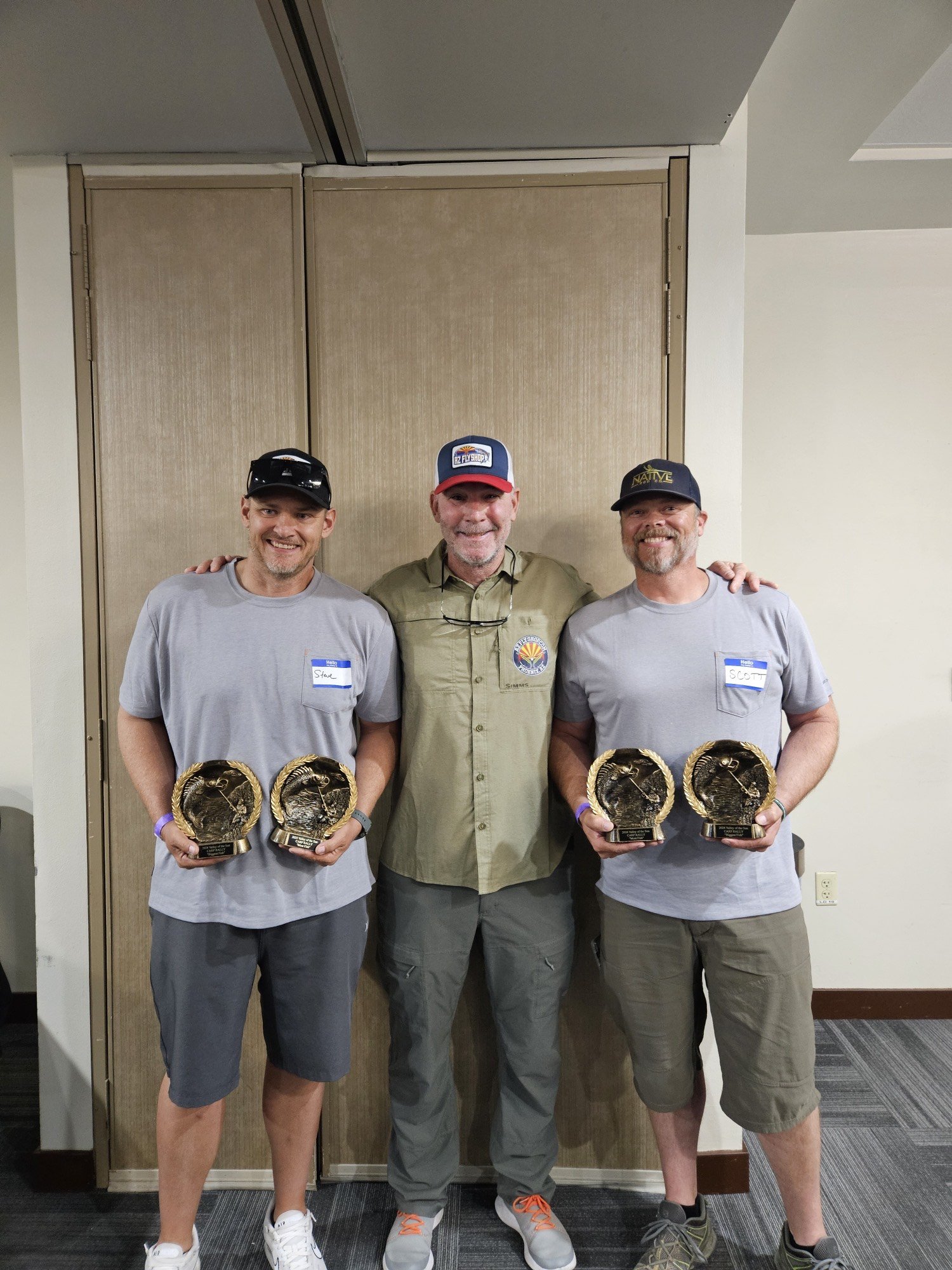Fishing When the Water Gets Warm
Fly fishing in the summer when the water warms up presents a unique set of challenges and opportunities for anglers. While the stereotypical image of fly fishing often involves crisp autumn mornings or cool spring days, successful summer fishing on warmer waters requires a nuanced understanding of fish behavior, insect hatches, and presentation techniques.
Understanding Warm Water Dynamics
As water temperatures rise, several factors influence fish activity. Firstly, dissolved oxygen levels decrease in warmer water. This can stress fish, particularly cold-water species like trout, making them less active and more selective in their feeding. Fish may seek out cooler refuges, such as deeper pools, shaded areas, or the inflow of colder tributaries.
Secondly, the metabolism of fish increases in warmer water, meaning they need to consume more food to maintain their energy levels. However, this increased need for calories is often counteracted by their reduced activity due to oxygen stress. This creates a delicate balance where fish might feed more aggressively during short, opportune windows.
Insect Activity and Terrestrial Influence
Summer also brings a significant shift in insect activity. While spring and early summer are known for prolific aquatic insect hatches (mayflies, caddisflies, stoneflies), warmer months often see a decline in large, widespread aquatic hatches. Instead, anglers should focus on smaller, more sporadic hatches and, crucially, terrestrial insects.
Terrestrial insects – grasshoppers, ants, beetles, and cicadas – become a primary food source for fish in the summer. These insects are often blown or fall into the water from streamside vegetation, providing a substantial meal for opportunistic fish. Mimicking these land-based insects with appropriate fly patterns becomes paramount.
Strategic Approaches for Warm Water Fishing
Time of Day
Fishing during the cooler parts of the day is often the most productive. Early mornings, just after sunrise, and late evenings, as the sun begins to set, are prime times. During these periods, water temperatures are at their lowest, and fish are more likely to be actively feeding. Midday fishing, especially on bright, sunny days, can be particularly challenging as fish retreat to deeper, cooler lies.
Location, Location, Location
Identifying areas with cooler water is key. Look for:
Deep pools: Deeper water generally stays cooler.
Shaded banks: Overhanging trees and vegetation provide shade, keeping the water beneath cooler.
Confluences: Where a colder tributary meets the main river, the mixing of waters creates a cooler zone.
Riffles and oxygenated water: While warm, well-oxygenated riffles can still hold active fish, particularly during cooler parts of the day.
Fly Selection and Presentation
Given the decline in large aquatic hatches, terrestrial patterns should be a staple in the summer fly box. High-floating patterns that mimic grasshoppers, ants, and beetles are highly effective. When aquatic insects are present, focus on smaller, more subtle patterns that imitate midges, small caddis, or even emergers that might be struggling in the warmer water.
Presentation is critical. Fish in warmer water can be more skittish and easily spooked. Longer, lighter leaders and tippets can help achieve a more natural drift. Casts should be accurate and delicate, aiming to land the fly gently without disturbing the water.
Indicator Nymphing and Streamers
While dry fly fishing for terrestrials is a thrill, indicator nymphing can be highly effective when fish are holding deep. Drifting small nymph patterns under an indicator allows anglers to present flies near the bottom where fish may be seeking refuge.
For larger fish, particularly in rivers with healthy populations of predatory species, streamer fishing can be productive. Stripping larger fly patterns that imitate baitfish can provoke an aggressive strike from fish looking for a substantial meal. This is often best done during low light conditions or in deeper, darker pools.
Conservation in Warm Water
Finally, conservation is paramount when fly fishing in warm water. Fish are already under stress due to elevated temperatures. Minimize handling of fish, keep them in the water as much as possible, and use barbless hooks to reduce harm. If a fish appears overly stressed, it's best to release it quickly without taking pictures or prolonging the fight. In extreme heat conditions, it may even be responsible to avoid fishing altogether, particularly for sensitive species like trout, to prevent unnecessary mortality.
In conclusion, summer fly fishing on warm water demands adaptability and a keen understanding of the environment. By adjusting techniques, fly selection, and fishing times, anglers can still experience rewarding days on the water while prioritizing the well-being of the fish.
Life Cycle of a Montana Salmon Fly
The Salmon Fly, Pteronarcys californica, is a majestic insect whose life cycle is intrinsically linked with the health of the rivers it inhabits, and, by extension, with the passionate pursuit of fly fishing. From its humble beginnings as an egg to its brief, spectacular aerial display, the salmon fly's lifespan is a testament to nature's cycles, offering fly anglers a unique window into the aquatic world and an exhilarating challenge on the water.
The journey of a salmon fly begins with an egg, typically laid in clusters on the water's surface by the female after mating. These eggs sink to the riverbed, finding refuge among the gravel and rocks. After an incubation period, which varies depending on water temperature, the nymphs hatch. This is where the bulk of the salmon fly's life is spent—beneath the water's surface. Salmon fly nymphs are easily recognizable by their large, flattened bodies, prominent antennae, and two tails. They are voracious predators, feeding on detritus, algae, and even smaller invertebrates, playing a crucial role in the river's ecosystem.
This nymphal stage can last for a remarkable two to three years. During this time, the nymphs undergo numerous molts, shedding their exoskeletons as they grow. They are incredibly sensitive to water quality, requiring cold, clean, and well-oxygenated water to thrive. This makes them excellent bio-indicators; a healthy population of salmon flies often signifies a healthy river system. For the fly angler, the presence of these large nymphs is a beacon of hope, as they represent a substantial food source for trout and other fish. During the nymphal stage, particularly as they mature, fish will actively seek them out, making nymph imitations a consistently effective fly pattern.
The climax of the salmon fly's life cycle, and arguably the most anticipated by fly fishermen, is the emergence. As water temperatures rise in late spring or early summer, the mature nymphs migrate towards the riverbanks. They crawl out of the water onto rocks, logs, or vegetation, where they split their exoskeletons and emerge as winged adults. This transformation is a truly remarkable sight, often occurring en masse, creating a brief but intense period of activity. The emergence is not without its perils; birds, bats, and even fish can prey on the vulnerable adults as they transition.
Once emerged, the adult salmon flies have a singular purpose: to reproduce. Their lifespan in this winged stage is incredibly short, lasting only a few days, perhaps a week at most. During this time, they are focused on finding a mate. Females, after mating, will return to the water to deposit their eggs, thus completing the cycle. For fly anglers, this is the golden window. The sheer size of the adult salmon fly, often exceeding two inches in length, makes it an irresistible meal for large trout. When a full-blown salmon fly hatch is underway, the river can come alive with explosive rises as fish gorge themselves on the abundant, protein-rich insects. This is when large, bushy dry flies, meticulously crafted to imitate the adult salmon fly, become the weapon of choice. The "smash and grab" takes, often audible and visually spectacular, are the stuff of fly fishing legend.
Fly fishing during a salmon fly hatch is an experience unlike any other. It demands precision casting, often with larger-than-average dry flies, and a keen eye for discerning the subtle and not-so-subtle movements of feeding fish. The sheer abundance of natural insects can make fish selective, requiring perfect drifts and accurate presentations. However, the rewards are often commensurate with the challenge, yielding some of the largest and most aggressive trout of the season. Beyond the fishing itself, the salmon fly hatch is a communal event, bringing anglers together to witness and participate in one of nature's grandest spectacles.
In conclusion, the lifespan of a salmon fly, from its long, secluded existence as a nymph to its fleeting, vibrant presence as an adult, is a captivating natural phenomenon. It underscores the delicate balance of aquatic ecosystems and provides a powerful connection between the natural world and the sport of fly fishing. For the dedicated angler, understanding and appreciating the life cycle of the salmon fly is not merely an academic exercise; it is the key to unlocking some of the most thrilling and memorable moments on the river, forging an enduring bond with the wild places they cherish.
Alaska: An Amazing Adventure with a Breathtaking View ~written by Kimberly Sanders
If you are presented with the opportunity to travel to Alaska on a fishing adventure, don’t say no! You will be rewarded with an incomparable experience in a place of stunning natural beauty. And, this adventure doesn’t have to break the budget. Many Alaskan fishing lodges come with upwards of a $7,000 price tag, but my experience was much different. I stayed in clean, comfortable accommodations, ate heartily, and caught big beautiful fish for less than half that price. Here are some details about a recent trip I took to Kasilof on the Kenai Peninsula with 5 other anglers in late October.
I flew into Anchorage and overnighted there before meeting up with the rest of the fishing party. We rented two 4x4 vehicles to transport the 6 of us plus all our gear. Before heading out, the group fueled up with a hearty and delicious breakfast at Heidi’s restaurant in Anchorage. (If you find yourself in Anchorage, even if you are not on a fishing trip, I highly recommend this place! Just yum!). After breakfast, we headed out of Anchorage and toward the Kenai Peninsula. The highway travels along the Cook Inlet with stunning vistas of the Aleutian and Alaskan Range. There are numerous pull-outs with signage about the geologic and gold rush history of the area. This is also a great place to spot beluga whales.
The drive time from Anchorage to Kasilof is about 3 hours, but the trip was broken up by stops at grocery stores for provisions, and, of course, a few fly shops for local knowledge and advice. We arrived at Kasilof Cabins (www.widespreadfishing.com) and quickly unloaded then wadered up. The Kasilof river is directly behind the cabins and the walk to the water took about a minute. Everyone practiced a few casts and pulled out fish until it was too dark to see our indicators, so back to the cabins and off to dinner at the Angry Salmon in Anchor Point. We took great care on the local highways because moose are abundant and oftentimes crossing the roadway.
The next day was a drift for steelhead on the Kasilof River. Reubin and Mark were fantastic guides and kept our crew searching out spots where steelhead are known to hold. The steelhead run had been early this year and were reportedly not as abundant as a few weeks before, but many in our group pulled in some nice specimens of steelhead, Dolly Varden, and salmon. Most, if not all, were caught on small 6 mm peach colored beads, also known as trout crack!
The following day, the group went to Deep Creek and the Anchor River to try our luck/skill. A number of Dolly Varden were brought to the net, but they were not as abundant as we had hoped for. This area, however, was gorgeous and we hiked through spots that felt remote. Yes, we all carried bear spray but it seemed like this was more of a moose habitat than bear. A small group of us took a side excursion down to the very end of the Kenai peninsula to check out Homer. We drove all the way to the end of the Homer Spit where the fishing fleet is located. It seems like this area would be hopping during high season with shops, galleries, and restaurants, but it was quiet and peaceful on our visit. It was well worth the trip to see the snow covered mountains across Kachemak Bay, and seals bobbing in the water right off the beach.
The next day, Reubin and Mark of Widespreadfishing.com took us predawn to Skilak Lake for a crossing to the Kenai river in search of rainbow trout. Their boats were comfortable and their gear was up to the task of pulling in BIG fish. One of the boats even had a propane heater to warm up chilled anglers. I had on five layers of clothes but hardly noticed when reeling in such beautiful fish. Everyone had a successful day of landing fish—most were hard-fighting rainbows between 23 and 30 inches. There were very few other boats on the river so we felt like we had the place to ourselves, sharing it only with flocks of bald headed eagles, a bear, and a few seals. We ended the day with an angler pulling in the 30 inch rainbow and high-tailed it back upriver and across the lake before the winds off the glaciers picked up creating a treacherous crossing.
Our final day was split between fishing locally right behind the cabin (more Dolly Varden) and exploring other areas farther up the Kenai river that were accessible from the roadway near Cooper Landing. Our group ended up back in Anchorage for a final meal at a local watering hole called The Bear Paw where we enjoyed halibut tacos and fish and chips. We told fish stories, recounted some memorable moments from the trip and unanimously agreed that this was worth doing again!
Holiday Shopping for an Anlger with Native Rod Company
A Fisherman's Holiday Shopping Spree: The Quest for the Perfect Fly Rod
The holiday season, a time of joy, cheer, and often, a bit of indulgent shopping. For the avid fly fisherman, this period presents a unique opportunity to indulge in a passion that transcends seasons. The quest for the perfect fly rod, a tool that can transform a serene river into a thrilling battleground, often becomes the centerpiece of their holiday shopping spree.
The allure of a new fly rod is undeniable. It's a tangible symbol of hope, a promise of future adventures. Whether it's a lightweight 3-weight for delicate trout streams or a powerful 9-weight for battling large saltwater species, each rod offers a unique experience. The anticipation of its arrival, the unboxing, and the first cast can be as exhilarating as the catch itself.
However, the process of selecting a fly rod is far from simple. It's a meticulous endeavor that requires careful consideration of factors such as rod action, line weight, material, and personal preference. A fast-action rod, for instance, offers a quick, powerful delivery, ideal for long casts and aggressive presentations. Conversely, a slow-action rod provides a more gentle, forgiving feel, perfect for delicate presentations and smaller fish.
The material of the rod also plays a significant role. Graphite rods, known for their strength and sensitivity, are a popular choice among anglers. However, fiberglass rods, with their unique flex and feel, offer a nostalgic experience for traditionalists. Bamboo rods, the pinnacle of craftsmanship, provide an unparalleled level of elegance and performance, but come with a hefty price tag.
Ultimately, the best fly rod is the one that feels right in your hands. It should be an extension of your arm, a tool that allows you to connect with the water and its inhabitants on a deeper level. Whether you're a seasoned angler or a novice just starting out, the holiday season offers the perfect opportunity to invest in a quality fly rod that will bring years of enjoyment.
Carp Rally in the Valley - written by Steve Cserpnyak
Carp Rally in the Valley
One of my favorite pastimes in fly fishing, since I moved to Arizona, is chasing carp on a fly rod. My progression in the sport kind of naturally led me to it. What’s not to like about mostly sight fishing for 30 in + fish? I think of it like a bad habit or addiction. When you first start it seems innocent enough, like chasing pretty 12” trout in pretty places. I still enjoy that, but now in the throes of my addiction to fly fishing going on close to 20 years, I spend my time in the ghetto of Phoenix fishing for monsters in canals which contain trash, shopping carts, bikes, and probably a body or two.
Steve doing some night catching
This obsession has led me to get involved in the local fly shop that hosts a carp tourney every year. The 1st 3 years, my partners and I had to work through some things and figure out how to be successful. I knew this year would be different. I know we had a chance to win, not just one of two categories for biggest or most fish. We wanted to win both, biggest and most fish, which had never been accomplished in this tournament.
When my partner Scott Long, a long-time friend and ridiculously good fly angler arrived to fish with me for the tournament. I had a hard time containing my excitement. I had spent months scouting spots and fine-tuning strategy and I knew that this spot and presentation would catch these monster grass carp. I spent a ton of time leading up to the tournament tying flies and bought every chartreuse material I could find. I also raided the local craft store and found things I couldn’t find at the fly shops. I was proud to say that every fish we caught at the tournament was caught on a fly pattern I tied. I wasted no time outlining the strategy and what I thought it would take to win both categories to Scott. He said, “Tell me what to do, and I will make it happen.” I know one thing about Scott, it is that he isn’t afraid of hard work.
On the day of the tournament, we registered at the shop and made a bee line to the shop. I knew other anglers from the tournament also knew about the spot, so being there early would be key. Like clockwork another team showed up and fished directly across from us. I made my 1st cast, 2 stack mends and bobber down! Netting these fish requires more patience than any fish I have targeted. If you try to make it happen, you will lose them. Well, our 1st fish had us a little excited and I tried to put too much pressure on the head and that 30 in fish was gone. A bad omen? Nope! We just went right back to our spot and within minutes, Scott had 1 on. This continued from 10am at the start of the tournament till around Midnight. Our net finally broke and we needed to make a midnight run to the Scottsdale Wal-Mart to buy another and have something to eat besides Beef Jerky and Protein bars.
Nice Carp caught to up their winning entries
We decided to get 2 hours of sleep before getting up at 3am to be back on the water at 4am. We ended up catching 5 carp at night, which was a new experiment that we weren’t 100% sure would work, but it did and likely won the most fish category for us.
When the whirlwind 24 hour period ended we were informed that we had accomplished our goal of winning the biggest and most fish categories for the 1st time ever. We submitted 21 grass carp, the biggest was 38 inches long. Scott had a couple bigger ones on, but they came unbuttoned. We had another dozen that didn’t work out for one reason or another.
In the end, the best part was all the stories and time spent with an amazing friend. We had a blast and can’t wait to do it next year!
WINNERS!! Steve Cserpnyak & Scott Long
Fly Fishing Entomology: A Match Made in Heaven
Fly fishing, an art form as much as it is a sport, demands a deep understanding of the aquatic ecosystem. At its core, the practice revolves around mimicking the natural food sources of fish, and this is where entomology, the study of insects, plays a pivotal role. Fly fishing entomology is the intricate relationship between the angler, the insect, and the fish, a delicate balance that, when understood and harnessed, can lead to exceptional success on the water.
The cornerstone of fly fishing entomology is the identification and imitation of aquatic insects. These tiny creatures, often overlooked by the casual observer, form the primary diet of many trout, bass, and other game fish. By understanding the life cycles, behaviors, and appearances of these insects, anglers can select the appropriate fly patterns to entice their target species.
One of the most crucial aspects of fly fishing entomology is recognizing the different stages of an insect's life cycle. From the aquatic nymph, which emerges from the eggs, to the terrestrial adult, each stage presents unique opportunities for the angler. For instance, during the nymph stage, anglers might employ wet flies or nymphs to imitate the insect's underwater life. As the nymph emerges and transforms into an adult, dry flies that mimic the floating insect become effective.
Moreover, understanding the behavior of aquatic insects is essential. Factors such as water temperature, current speed, and food availability influence the distribution and activity of these creatures. By observing these conditions, anglers can make informed decisions about where and when to fish. For example, in a fast-flowing river, nymphs might be found clinging to rocks near the bottom, while adults might be drifting downstream.
The art of fly tying, the process of creating artificial flies to mimic aquatic insects, is intimately connected to fly fishing entomology. A skilled fly tier can produce incredibly realistic flies that perfectly match the appearance and behavior of their natural counterparts. This attention to detail is crucial, as even the slightest imperfection can deter a wary fish.
In conclusion, fly fishing entomology is a fascinating field that bridges the gap between science and sport. By studying the intricacies of aquatic insects, anglers can develop a deeper appreciation for the natural world and improve their chances of success on the water. Whether you're a seasoned fly fisherman or just starting out, a solid understanding of entomology will undoubtedly enhance your fishing experience.
Celebrating National Public Lands Day
A Day for Our Lands: National Public Lands Day
National Public Lands Day, celebrated on the fourth Saturday of September, is a day dedicated to honoring and preserving our nation's public lands. It's an opportunity for individuals and communities to come together and contribute to the health and well-being of these invaluable natural resources.
Our public lands, which encompass everything from national parks and forests to state and local parks, play a vital role in our lives. They provide recreational opportunities, clean air and water, and support biodiversity. They also serve as important cultural and historical sites, preserving our nation's heritage. However, these lands face numerous challenges, including pollution, climate change, and overuse.
National Public Lands Day offers a chance to address these challenges and make a positive impact. On this day, volunteers across the country participate in a variety of activities, such as trail maintenance, tree planting, and litter cleanups. These efforts help to protect and restore our public lands, ensuring that they remain healthy and accessible for future generations.
Beyond the environmental benefits, National Public Lands Day also fosters a sense of community and connection to nature. By working together to preserve our public lands, we strengthen our bonds with one another and create a shared sense of purpose. It's an opportunity to appreciate the beauty and importance of these natural spaces and to recognize the responsibility we have to protect them.
In conclusion, National Public Lands Day is a valuable event that celebrates our nation's public lands and encourages us to take action to preserve them. By participating in volunteer activities and raising awareness about the importance of these spaces, we can help to ensure that our public lands remain healthy, vibrant, and accessible for generations to come.
Why Celebrate National Public Lands Day?
Protect Our Environment: By volunteering on National Public Lands Day, you're helping to preserve and protect our natural resources for future generations.
Connect with Nature: Spending time outdoors has numerous benefits for both physical and mental health.
Meet New People: Volunteer events are a great way to meet like-minded individuals who share your passion for the outdoors.
Make a Difference: Your efforts can have a significant impact on the health and well-being of our public lands.
How to Get Involved:
Find a Volunteer Event: There are countless volunteer opportunities available on National Public Lands Day. You can search for events in your area by visiting the National Public Lands Day website or contacting your local park service or land management agency.
Participate in a Cleanup: One of the most common volunteer activities on National Public Lands Day is participating in a cleanup. Help remove litter and debris from parks, trails, and waterways.
Plant Trees: Planting trees is another popular activity on National Public Lands Day. Help restore forests and improve air quality.
Attend a Ranger-Led Activity: Many parks and public lands offer ranger-led activities on National Public Lands Day. Learn about the local ecosystem and wildlife.
Donate to a Land Conservation Organization: If you're unable to volunteer in person, consider making a donation to a land conservation organization that protects and preserves public lands.
National Public Lands Day is a fantastic opportunity to give back to our beautiful public lands and connect with nature. Whether you're a seasoned outdoor enthusiast or simply looking for a way to make a difference, there's something for everyone to enjoy on this special day. So, mark your calendar and get ready to celebrate our natural treasures!

